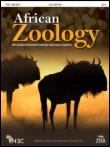Despite expanding road networks, there is limited understanding of the effects of roads on wildlife in East Africa. We present a baseline survey and describe the patterns of roadkill in the Tarangire—Manyara ecosystem of Tanzania. A 75 km stretch of the Arusha Highway that passes adjacent to Manyara Ranch and Lake Manyara National Park was studied for 10 consecutive days in November 2013 (the rainy season). Wildlife species killed on the road, roadkill frequency and road characteristics were determined. A total of 101 roadkill were recorded (0.13 roadkill km-1) comprising 37 species from all terrestrial vertebrate groups, of which two species, house cat (Felis catus) and domestic dog (Canis lupus), were domesticated species. Birds were the most frequently killed taxon (50%), followed by mammals (30%), reptiles (17%) and amphibians (3%). Excluding birds, roadkill primarily consisted of nocturnal species (65%) versus diurnal species (35%). Most roadkill (77.3%) were encountered on road stretches adjacent to protected areas of Manyara Ranch and Lake Manyara National Park compared with 22.7% on the road stretches adjacent to non-protected areas. These findings highlight that roads are a potential threat to wildlife in East Africa and serve as a baseline for future comparisons.
How to translate text using browser tools
1 April 2015
Wildlife Roadkill Patterns on a Major Highway in Northern Tanzania
John Kioko,
Christian Kiffner,
Nicole Jenkins,
Wendy J Collinson
ACCESS THE FULL ARTICLE

African Zoology
Vol. 50 • No. 1
April 2015
Vol. 50 • No. 1
April 2015
mitigation measures
protected areas
road ecology
wildlife mortalities




